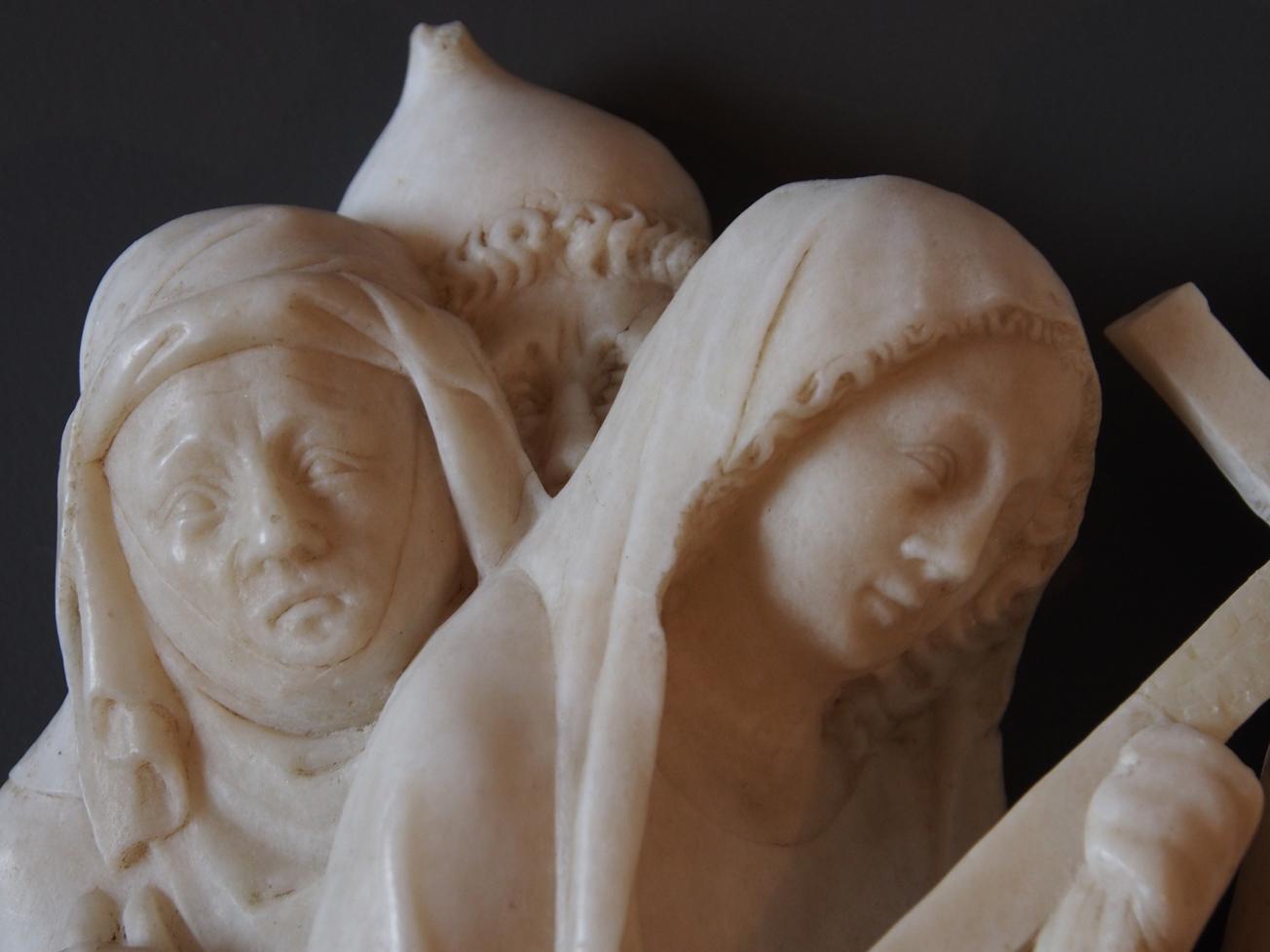
"The Carrying of the Cross", detail, second quarter of the 14th century, Louvre Museum, department of sculpture.
© BRGM - Wolfram Kloppmann
Since the beginning of time, invisible networks exchanging goods, people and ideas have crossed the length and breadth of Europe, evolving continuously. The only information we have on the times and places where the main form of transmission was oral is from archaeological finds.
When Baltic amber and Etruscan or Attic ceramics are discovered together in a Celtic tomb, it tells us a lot about the thriving trade that took place during the “protohistoric” period. But even in the Middle Ages, written records are often lacking. Fortunately, materials themselves can speak, whether used for everyday objects or luxurious artefacts. Their composition can preserve traces of their origins through elements linking them to the locations where raw materials were extracted for their manufacture.
A prestigious material
During the last decade, our research programme has brought together several laboratories specialising in heritage and geochemistry and an extensive global network of museums. Thanks to its scientific and financial commitment, the Louvre holds a special place in the project. The project is attempting to tease out the secrets of alabaster, a highly symbolic, prestigious material, but which retains a certain mystery.

A gypsum and alabaster quarry at Notre-Dame-de-Mésage, Isère, SE France.
© BRGM - Wolfram Kloppmann
Using the “signatures” of alabaster
From a chemical perspective, white alabaster is calcium sulphate, that is, nothing more than gypsum or its close relative, anhydrite. It therefore contains calcium, sulphur and oxygen as well as traces of strontium. The project is looking closely at these last three elements. Each has several stable isotopes, which are variants of chemical elements that differ only in the number of their neutrons and therefore mass. The ratios of heavy to light isotopes for these three elements, such as the ratio of sulphur 32 to its heavier counterpart, sulphur 34, provide an isotopic fingerprint for each alabaster deposit according to its geological age and the conditions of its formation.







